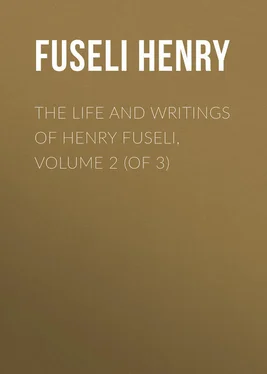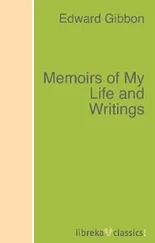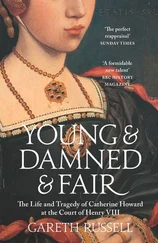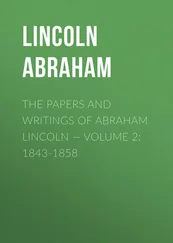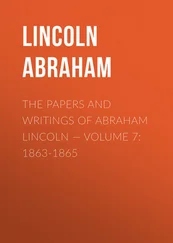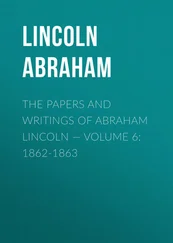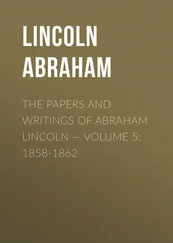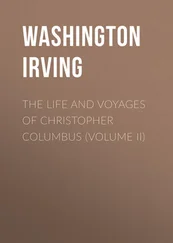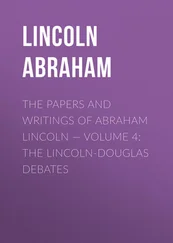Henry Fuseli - The Life and Writings of Henry Fuseli, Volume 2 (of 3)
Здесь есть возможность читать онлайн «Henry Fuseli - The Life and Writings of Henry Fuseli, Volume 2 (of 3)» — ознакомительный отрывок электронной книги совершенно бесплатно, а после прочтения отрывка купить полную версию. В некоторых случаях можно слушать аудио, скачать через торрент в формате fb2 и присутствует краткое содержание. Жанр: visual_arts, foreign_antique, foreign_prose, на английском языке. Описание произведения, (предисловие) а так же отзывы посетителей доступны на портале библиотеки ЛибКат.
- Название:The Life and Writings of Henry Fuseli, Volume 2 (of 3)
- Автор:
- Жанр:
- Год:неизвестен
- ISBN:нет данных
- Рейтинг книги:5 / 5. Голосов: 1
-
Избранное:Добавить в избранное
- Отзывы:
-
Ваша оценка:
- 100
- 1
- 2
- 3
- 4
- 5
The Life and Writings of Henry Fuseli, Volume 2 (of 3): краткое содержание, описание и аннотация
Предлагаем к чтению аннотацию, описание, краткое содержание или предисловие (зависит от того, что написал сам автор книги «The Life and Writings of Henry Fuseli, Volume 2 (of 3)»). Если вы не нашли необходимую информацию о книге — напишите в комментариях, мы постараемся отыскать её.
The Life and Writings of Henry Fuseli, Volume 2 (of 3) — читать онлайн ознакомительный отрывок
Ниже представлен текст книги, разбитый по страницам. Система сохранения места последней прочитанной страницы, позволяет с удобством читать онлайн бесплатно книгу «The Life and Writings of Henry Fuseli, Volume 2 (of 3)», без необходимости каждый раз заново искать на чём Вы остановились. Поставьте закладку, и сможете в любой момент перейти на страницу, на которой закончили чтение.
Интервал:
Закладка:
Henry Fuseli
The Life and Writings of Henry Fuseli, Volume 2 (of 3)
INTRODUCTION
It cannot be considered as superfluous or assuming to present the reader of the following lectures with a succinct characteristic sketch of the principal technic instruction, ancient and modern, which we possess: I say, a sketch, for an elaborate and methodical survey, or a plan well digested and strictly followed, would demand a volume. These observations, less written for the man of letters and cultivated taste, than for the student who wishes to inform himself of the history and progress of his art, are to direct him to the sources from which my principles are deduced, to enable him, by comparing my authors with myself, to judge how far the theory which I deliver, may be depended on as genuine, or ought to be rejected as erroneous or false.
The works, or fragments of works, which we possess, are either purely elementary, critically historical, biographic, or mixed up of all three. On the books purely elementary, the van of which is led by Lionardo da Vinci and Albert Durer, and the rear by Gherard Lairesse, as the principles which they detail must be supposed to be already in the student's possession, or are occasionally interwoven with the topics of the Lectures, I shall not expatiate, but immediately proceed to the historically critical writers; who consist of all the ancients yet remaining, Pausanias excepted.
We may thank Destiny that, in the general wreck of ancient art, a sufficient number of entire and mutilated monuments have escaped the savage rage of barbarous conquest, and the still more savage hand of superstition, not only to prove that the principles which we deliver, formed the body of ancient art, but to furnish us with their standard of style. For if we had nothing to rely on to prove its existence than the historic and critical information left us, such is the chaos of assertion and contradiction, such the chronologic confusion, and dissonance of dates, that nothing short of a miracle could guide us through the labyrinth, and the whole would assume a fabulous aspect. Add to this the occupation and character of the writers, none of them a professional man. For the rules of Parrhasius, the volumes of Pamphilus, Apelles, Metrodorus, all irrecoverably lost, we must rely on the hasty compilations of a warrior, or the incidental remarks of an orator, Pliny and Quintilian. Pliny, authoritative in his verdicts, a Roman in decision, was rather desirous of knowing much, than of knowing well; the other, though, as appears, a man of exquisite taste, was too much occupied by his own art to allow ours more than a rapid glance. In Pliny, it is necessary, and for an artist not very difficult, to distinguish when he speaks from himself and when he delivers an extract, however short; whenever he does the first, he is seldom able to separate the kernel from the husk; he is credulous, irrelevant, ludicrous. The Jupiter of Phidias, the Doryphorus of Polycletus, the Aphrodite of Praxiteles, the Demos of Parrhasius, the Venus of Apelles, provoke his admiration in no greater degree than the cord drawn over the horns and muzzle of the bull in the group of Amphion, Zetus, and Antiope; the spires and windings of the serpents in that of the Laocoon, the effect of the foam from the sponge of Protogenes, the partridge in his Jalysus, the grapes that imposed on the birds, and the curtain which deceived Zeuxis. Such is Pliny when he speaks from himself, or perhaps from the hints of some Dilettante; but when he delivers an extract, his information is not only essential and important, but expressed by the most appropriate words. Such is his account of the glazing-method of Apelles, in which, as Reynolds has observed, he speaks the language of an artist; such is what he says of the manner in which Protogenes embodied his colours, though it may require the practice of an artist to penetrate his meaning. No sculptor could describe better in many words than he does in one, the manœuvre by which Nicias gave the decided line of correctness to the models of Praxiteles; the word circumlitio , shaping, rounding the moist clay with the finger, is evidently a term of art. Thus when he describes the method of Pausias, who, in painting a sacrifice, foreshortened the bull and threw his shade on part of the surrounding crowd, he throws before us the depths of the scenery and its forcible chiaroscuro; nor is he less happy, at least in my opinion, when he translates the deep aphorism by which Eupompus directed Lysippus to recur to Nature, and to animate the rigid form with the air of life.
In his dates he seldom errs, and sometimes adjusts or corrects the errors of Greek chronology, though not with equal attention; for whilst he exposes the impropriety of ascribing to Polycletus a statue of Hephestion, the friend of Alexander, who lived a century after him, he thinks it worth his while to repeat that Erynna, the contemporary of Sappho, who lived nearly as many years before him, celebrated in her poems a work of his friend and fellow-scholar Myron of Eleutheræ. His text is at the same time so deplorably mutilated that it often equally defies conjecture and interpretation. Still, from what is genuine it must be confessed that he condenses in a few chapters the contents of volumes, and fills the whole atmosphere of art. Whatever he tells, whether the most puerile legend, or the best attested fact, he tells with dignity.
Of Quintilian, whose information is all relative to style, the tenth chapter of the twelfth book, a passage on Expression in the eleventh, and scattered fragments of observations analogous to the process of his own art, is all that we possess; but what he says, though comparatively small in bulk with what we have of Pliny, leaves us to wish for more. His review of the revolutions of style in painting, from Polygnotus to Apelles, and in sculpture from Phidias to Lysippus, is succinct and rapid; but though so rapid and succinct, every word is poised by characteristic precision, and can only be the result of long and judicious inquiry, and perhaps even minute examination. His theory and taste savour neither of the antiquary nor the mere Dilettante; he neither dwells on the infancy of art with doating fondness, nor melts its essential and solid principles in the crucibles of merely curious or voluptuous execution.
Still less in volume, and still less intentional are the short but important observations on the principals of art and the epochs of style, scattered over nearly all the works of Cicero, but chiefly his Orator and Rhetoric Institutions. Some of his introductions to these books might furnish the classic scenery of Poussin with figures; and though he seems to have had little native taste for painting and sculpture, and even less than he had taste for poetry, he had a conception of nature; and, with his usual acumen, comparing the principles of one art with those of another, frequently scattered useful hints, or made pertinent observations. For many of these he might probably be indebted to Hortensius, with whom, though his rival in eloquence, he lived on terms of familiarity, and who was a man of declared taste and one of the first collectors of the time.
Pausanias, the Cappadocian, was certainly no critic, and his credulity is at least equal to his curiosity; he is often little more than a nomenclator, and the indiscriminate chronicler of legitimate tradition and legendary trash; but the minute and scrupulous diligence with which he examined what fell under his own eye, amply makes up for what he may want of method or of judgment. His description of the pictures of Polygnotus at Delphi, and of the Jupiter of Phidias at Olympia, are perhaps superior to all that might have been given by men of more assuming powers, mines of information, and inestimable legacies to our arts.
Читать дальшеИнтервал:
Закладка:
Похожие книги на «The Life and Writings of Henry Fuseli, Volume 2 (of 3)»
Представляем Вашему вниманию похожие книги на «The Life and Writings of Henry Fuseli, Volume 2 (of 3)» списком для выбора. Мы отобрали схожую по названию и смыслу литературу в надежде предоставить читателям больше вариантов отыскать новые, интересные, ещё непрочитанные произведения.
Обсуждение, отзывы о книге «The Life and Writings of Henry Fuseli, Volume 2 (of 3)» и просто собственные мнения читателей. Оставьте ваши комментарии, напишите, что Вы думаете о произведении, его смысле или главных героях. Укажите что конкретно понравилось, а что нет, и почему Вы так считаете.
